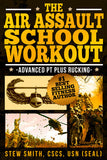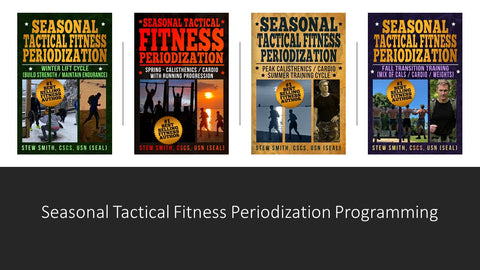Why Special Ops Use the CSS and Not the
More Common Competitive Swimming Strokes?

This is the most common question asked (usually by lifelong competitive swimmers) about the military's use of the side stroke or the Combat Swimmer Stroke (CSS), aka the Combat Side Stroke. These typically appear in my comments section on the Instagram Reels or my CSS Critique TikTok Channel, and with the unfortunate trolling tone a teenage swimming athlete can offer.
My answer with attitude: Just because you have spent countless hours swimming in a pool at competitive levels does not mean you know everything about swimming. There is another world that involves tactical uses of swimming/ SCUBA diving done by military commandos for generations before you ever decided to put on a speedo and stare at a black line for a sport.
My answer with more information: Here are the many reasons why competitive strokes may not be the best answer for Spec Ops Swimming:
The RULES: First, the 500yd Navy Physical Screening Test (PST) allows for the elementary side stroke, the breaststroke, or the modified side stroke nick-named the Combat Swimmer Stroke. The general theme is that these strokes must be "underwater recovery strokes."
However, beyond the PST (getting accepted into training) will require the addition of swimming and SCUBA diving with fins mostly in open water. 99% of your swimming with be done in fins once you are accepted into the training. So, if you choose to use breaststroke as your PST stroke, you will also need to learn the side stroke with fins to succeed beyond Day 1 of training/selection and get THROUGH the training.

1 - Stealth - Being quiet, not making splashes, and creating a low profile is the business of special operations and makes the side stroke or CSS more beneficial over the competitive swim strokes (freestyle, breaststroke, backstroke, butterfly). Now, imagine swimming at night, and you will understand how useful the quiet, low-profile CSS is a better option.
2 - Efficient - Most Special Ops members never swam competitively but must be comfortable and capable in the water. Learning a stroke that is energy-saving for miles in the open water (in fins) is required in some mission insertion and extraction phases. There is no need for a special ops candidate or member to be a world-class competitive swimmer...nor any athletic activity. However, all special ops members must be good at everything vs. great at any one event that forces opposite weaknesses.

3 - More Than Swimming - Typically, ocean water is cold, dark, and unforgiving. Depending on the mission, the members of special ops teams who use a water insertion into an area will also need to carry gear, weapons, ammo, and other special equipment. These insertions will likely include diving with little swimming, but the swimming must also be quiet and powerful enough to carry/drag the equipment.
4 - Mindset of Candidates - From the beginning, the candidates and students who strive to become special ops members must understand that special swim skills must be learned and perfected in all weather conditions and eventually in all sea states. From day 1 of their first fitness test, the students realize this is not a normal swimming competition. This stroke leads to a profession where the need for efficiency, confidence, and stealth are embedded into everything done in special ops.
The Difference Between CSS and Elementary Side Stroke - A picture is worth 1000 words so check out this video below and you can see the glide phases and the top arm pulls are completely different in the CSS vs Elementary Side Stroke.
Learn More with Video Critiques at TikTok.com/@stewsmith50 for free coaching (or Instagram Reels @stewsmith50
Besides, Swimming with fins will be 90% of all swim training in spec ops diving / rescue swimming selection. You will use the side stroke, CSS, Lead Arm / Trail Arm or Turtlebacking with fins for all open water swimming events. The CSS without fins is nearly identical to swimming CSS with fins.
During Spec Ops Training and Beyond - LATA or CSS with Fins- Another option is the Lead Arm Trail Arm Method used primarily by the Air Force Special Warfare program. While the CSS will be used in the Navy Spec Ops programs. Both will be used when swimming in open water and / or selection testing swims, depending on the branch of service. Here is a side by side video showing the differences:
Many swimmers become members of Special Ops units. These candidates do well in the water with their swimming and treading skills, but gravity is not the swimmer's friend. Load bearing, running, rucking, general strength, speed, and agility on land can break a candidate who never got out of the pool for additional athletic training. Though the skills learned from competitive swimming are great, the need to grow beyond the competitive strokes, learn the tactical strokes, and become a tactical athlete will be needed if you choose this path.
Are You Considering a Life in Special Operations? Start HERE:
Crushing the PST (Swim, PT, Run)
PST: Putting it ALL Together: Learn HOW to take this test or you will never even make it TO the Training.
The PST CLINIC – Step by Step Breakdown of the Navy BUDS / SWCC / EOD / Diver / Air Rescue PST
Getting Faster Runs and Swims (PST related)
Classic Week of PST Training (FREE)
Do You Want a Better PST Score?
Learn How to PST Transition - Especially if the run is the worse event after doing the preceding PST events.
The Week of the PST Test – How to Arrange Your Training
The 500yd Swim of the PST is just the first event of the 5 part PST. Learn HOW to take the test efficiently so you can crush all events. See related articles on Crushing the PST:
Once you get the contract - congrats! You made it TO the training. Now you must focus on being in the top 25% of your class on Day 1 of the First Phase in as many events as possible because the bottom 75% typically will not make it. That means you now have to train to get THROUGH the training. There is a difference between the two phases of tactical fitness. You can do both at the same time AFTER you have reached optimal numbers on the PST.
After You Pass the PST - Assess Yourself for
Any Other Weaknesses (Assessment Tool)
Your Weaknesses Will Be Exposed IF YOU Ignore Them - During the Recruiting Process and certainly through Prep and BUD/S itself.
Not being prepared for your "dream job" is on you. It takes time to get to the level of being able to crush the PST and then the follow on logs, boats, and weekly 4 mile runs, and 2 ocean mile swims with fins. Just because you can crush a PST, does not mean anything for the follow on events at BUDS.
Show up on Day 1 of your job interview (PST Test Day) well prepared and be in the passing group at least. Showing up and failing is the wrong attitude and a horrible first impression to your future employer. YES - take it that seriously IF you really want this. After all, it only takes Four Steps to Get Prepared for Special Ops Selection.
If you want help, that’s what I do…. Check out these resources that have helped spec ops candidates succeed where others have failed for the last 20+ years!
Training is What We Do:
Need Programming for Fitness Tests and Beyond? We are all about getting you TO and THROUGH your future training program. See how that works.
There is More To StewSmithFitness.com than a You May Know
(In fact, there are more than 40 books, 1000+ articles, online coaching - and more)

Who is Stew Smith CSCS? Coach, Trainer, Writer, Podcaster: I'm the former Navy SEAL that tactical candidates go to for books, ebooks and online coaching to prepare themselves to get to and through intense tactical assessment and selection programs and qualify for service in their chosen tactical profession. See More at StewSmithFitness.com
Where to Find More Information About Optimal Performance Training Programs
When you start training again, consider the seasonal tactical fitness model. I call it A WAY to train and obviously not the only way to train. But it offers the opportunity to never neglect your weaknesses, helps with flexibility and mobility, but will also put you at a level of physical abilities where you are happy with your overall ability to do just about anything. We have a system where the seasons dictate our training. When it is nicer outside, we tend to run and do more calisthenics. When it is colder and not so nice, we lift more, run less, and still maintain our outdoor activities with shorter runs and rucks. Check it out: Seasonal Tactical Fitness Periodization System.
These Seasonal Tactical Fitness BLOCK Periodization programs will walk you through 4 x 4 weeks cycles with 16 weeks of each season in two programs. (32 total weeks)

Increase Strength & Crush the PST / PAST
3 Weeks Strength - 1 Week PT / Cardio Focus
(16 weeks)
These programs will walk you through 4 cycles with 12 weeks of each season in two programs.
The Specific Military / Special Ops Physical Fitness Workouts

Navy SEAL Workout Phase 1
Navy SEAL Workout Phase 2 - 3
Navy SEAL Workout Phase 4 Grinder PT
Navy SWCC Workout
Army / Air Force Advanced Fitness / Special Ops
Army PFT Workout (Prep For Rucking, OPAT, ACFT)
Army Special Forces / Ranger Workout
Army Air Assault School Workout
Army Airborne Workout
Air Force Special Warfare IFT / OFT / Selection Prep






Advanced Running Program - Special Ops Supplement Plan
USMC RECON / MarSOC Workout
USMC OCS / TBS Workout
USMC IST and PFT
The Combat Conditioning Workout
Air Force PJ / CCT Workout Battlefield Airman Prep Course
The UBRR Upper Body Round Robin Workout / Spec Ops version
The Coast Guard Rescue Swimmer / Navy SAR Workout
The Service Academy Workout (West Point, Navy, Air Force Academy)
The Navy, Air Force, Marine Corp Boot Camp Workout
The Law Enforcement Physical Fitness Workouts
The FBI Academy Workout | FBI Workout Vol 2
The DEA Workout
The FLETC Workout - Ace the PEB
The PFT Bible: Pushups, Sit-ups, 1.5 Mile Run
The Fire Fighter Workout - Ace the CPAT
Online Coaching Options
Online PT CLUB - Weekly Workouts created personally for you.
New Member's Only Content / Services Program!
If you want access to years worth of workouts, many of the top eBOOKs, favorite workouts of the week, free fitness APP, closed Facebook Group, video / picture library of exercises, and more access to LIVE Q/A sessions check out the Stew Smith Fitness Members Section.
The dashboard below has the links to all the information, archives, videos, and links to workouts, podcasts, live Q and A lessons.
Consider this! - A Membership Program and Gain Access to Exclusive Content
(click for Fitness Club Dashboard - members only)
Questions? Just email - Stew@StewSmith.com
At StewSmith.com - List of Products and Services
- FREE Articles
- Podcasts and Swimming Videos (Youtube, TikTok, Instagram)
- eBooks
- Books and eBooks in PRINT
- Stew Smith Fitness Club membership site
- Online Coaching
Stew Smith Fitness























